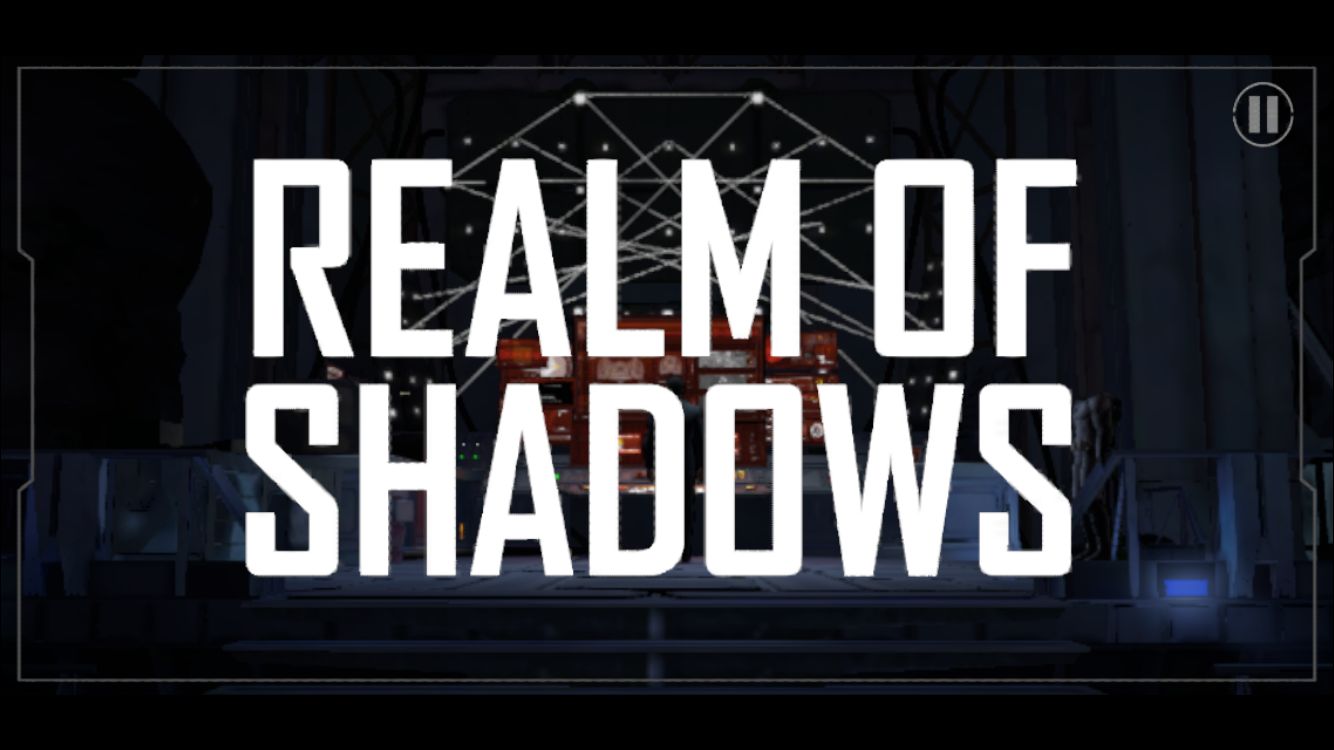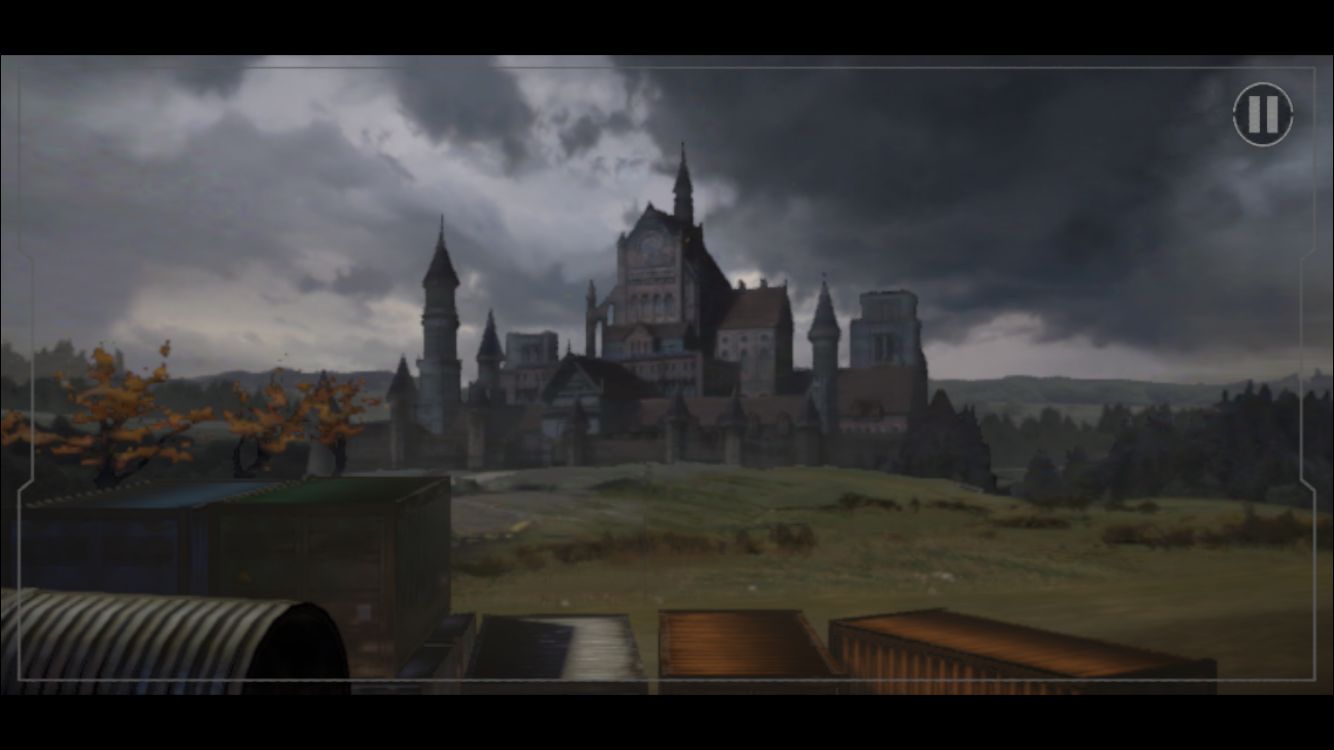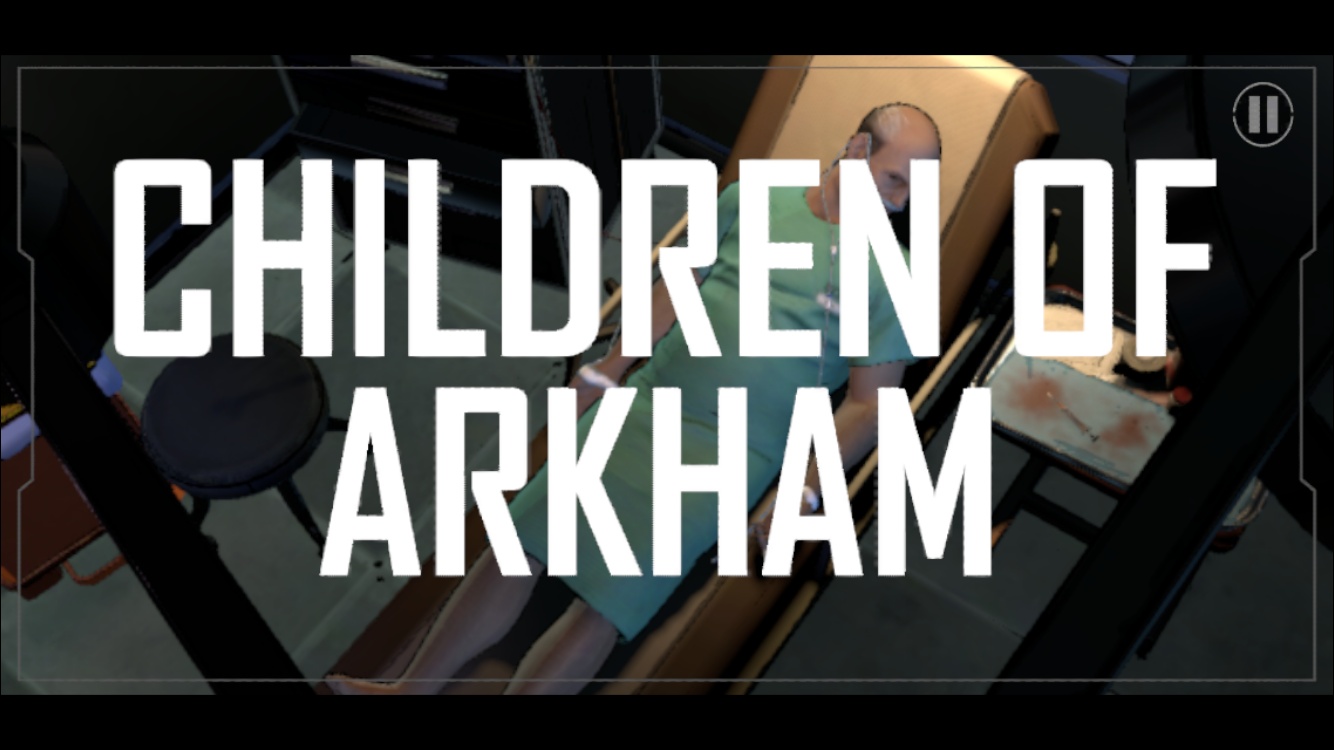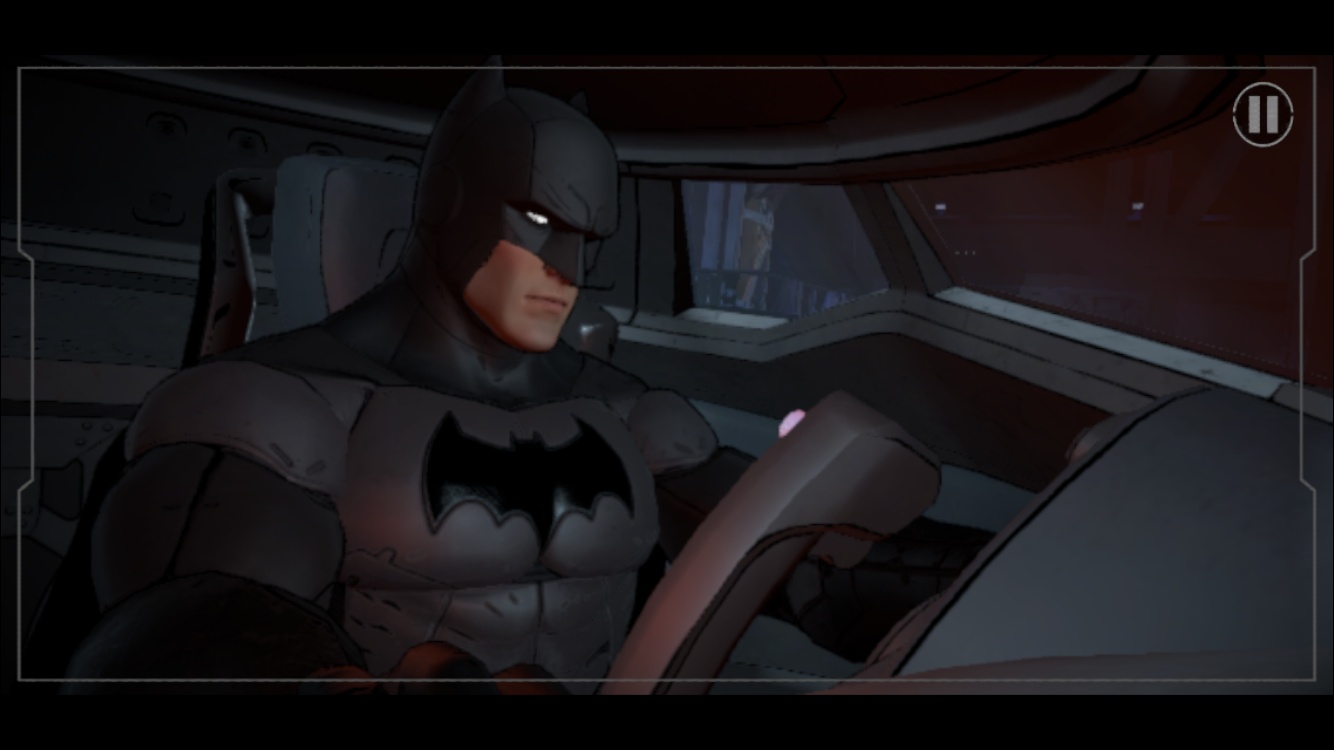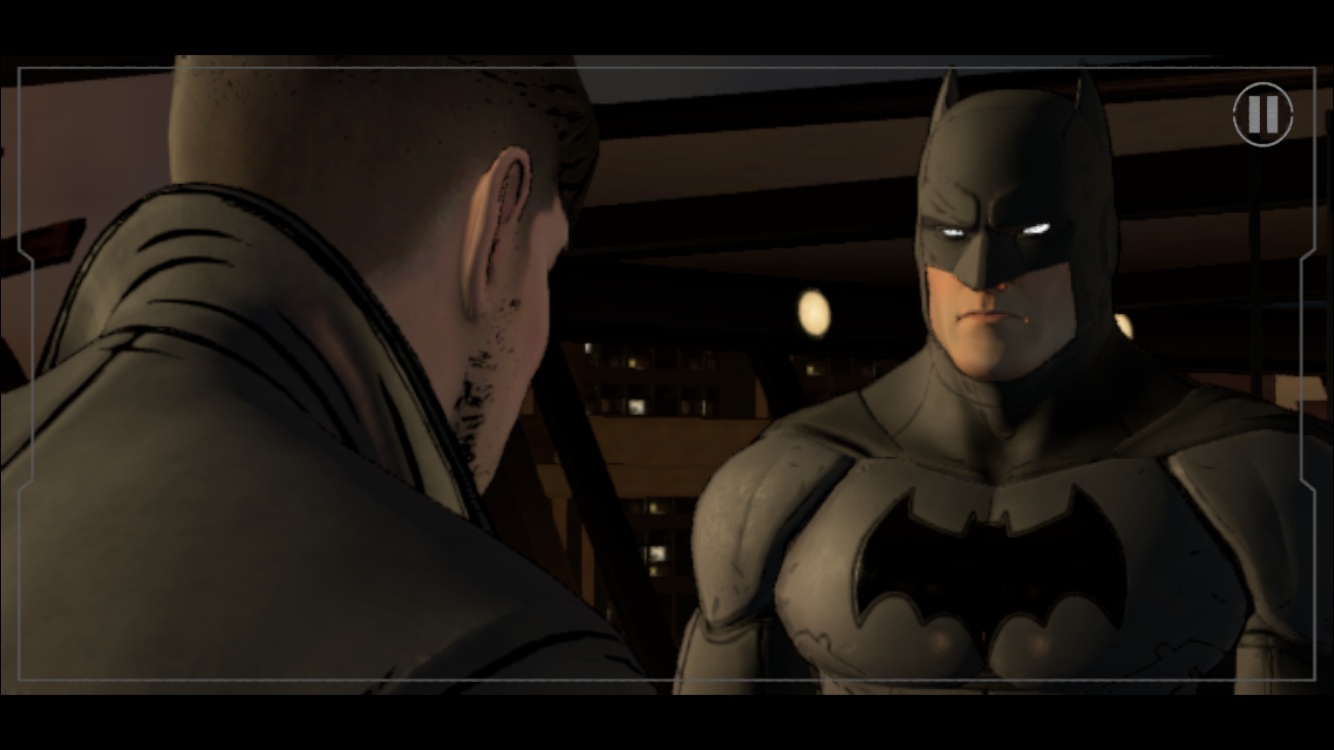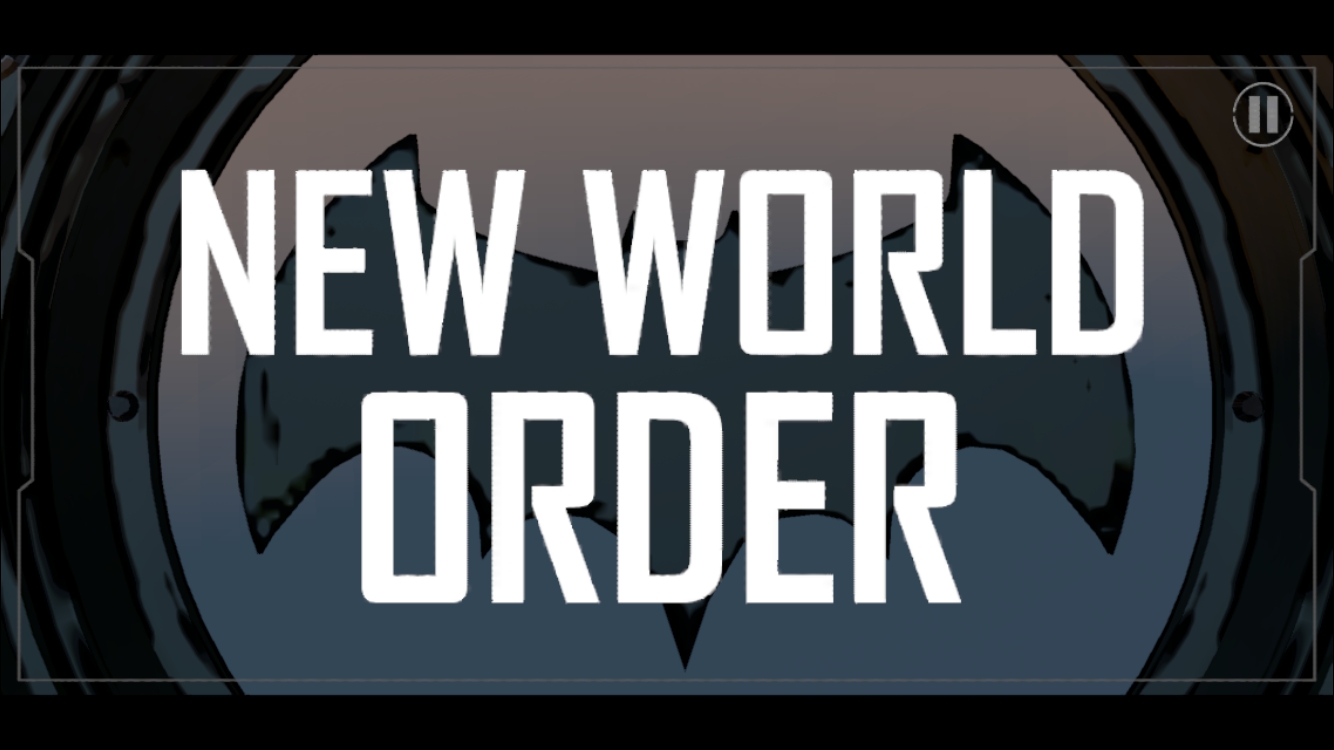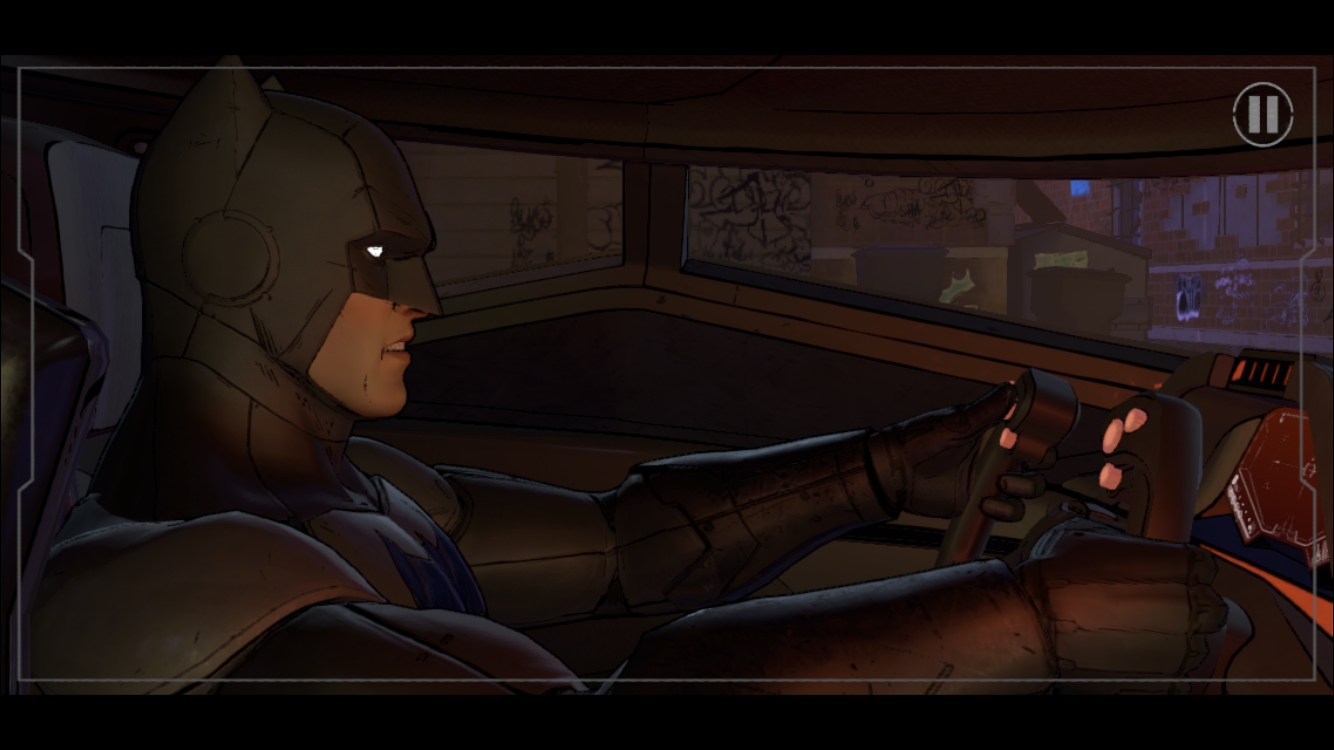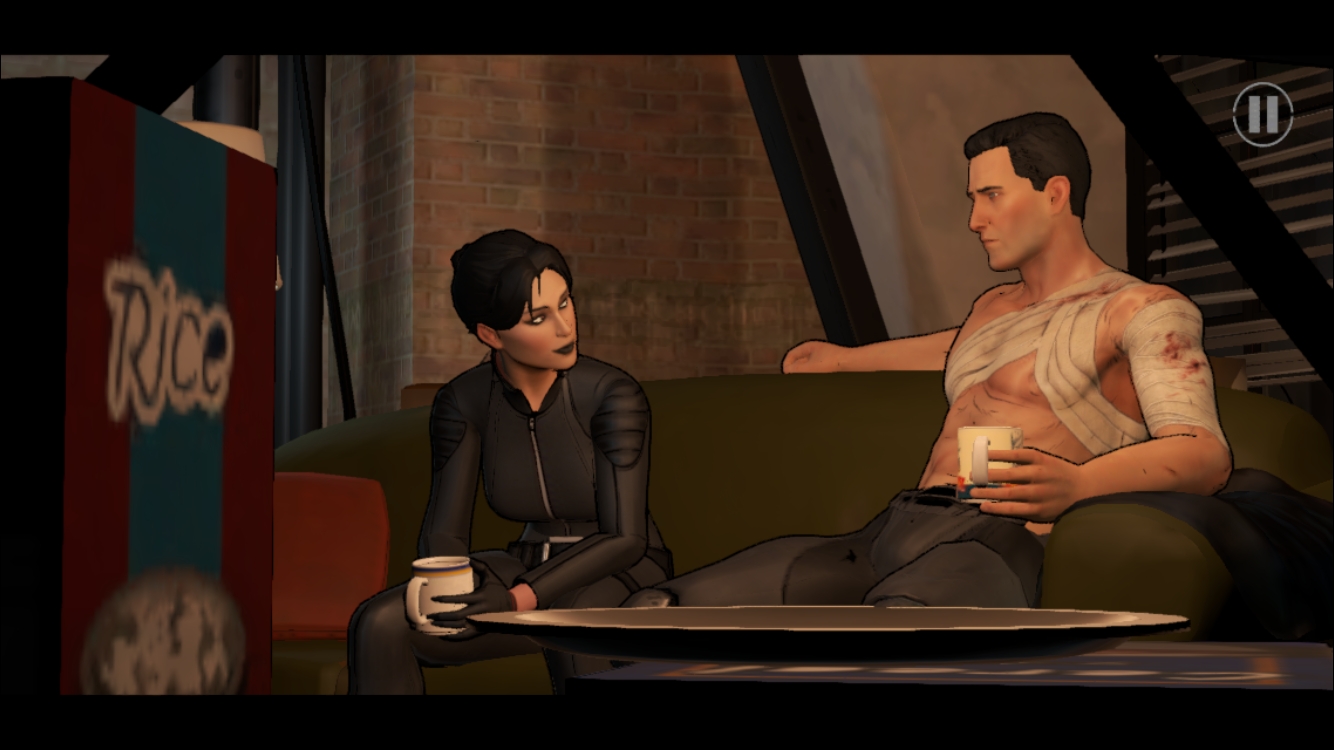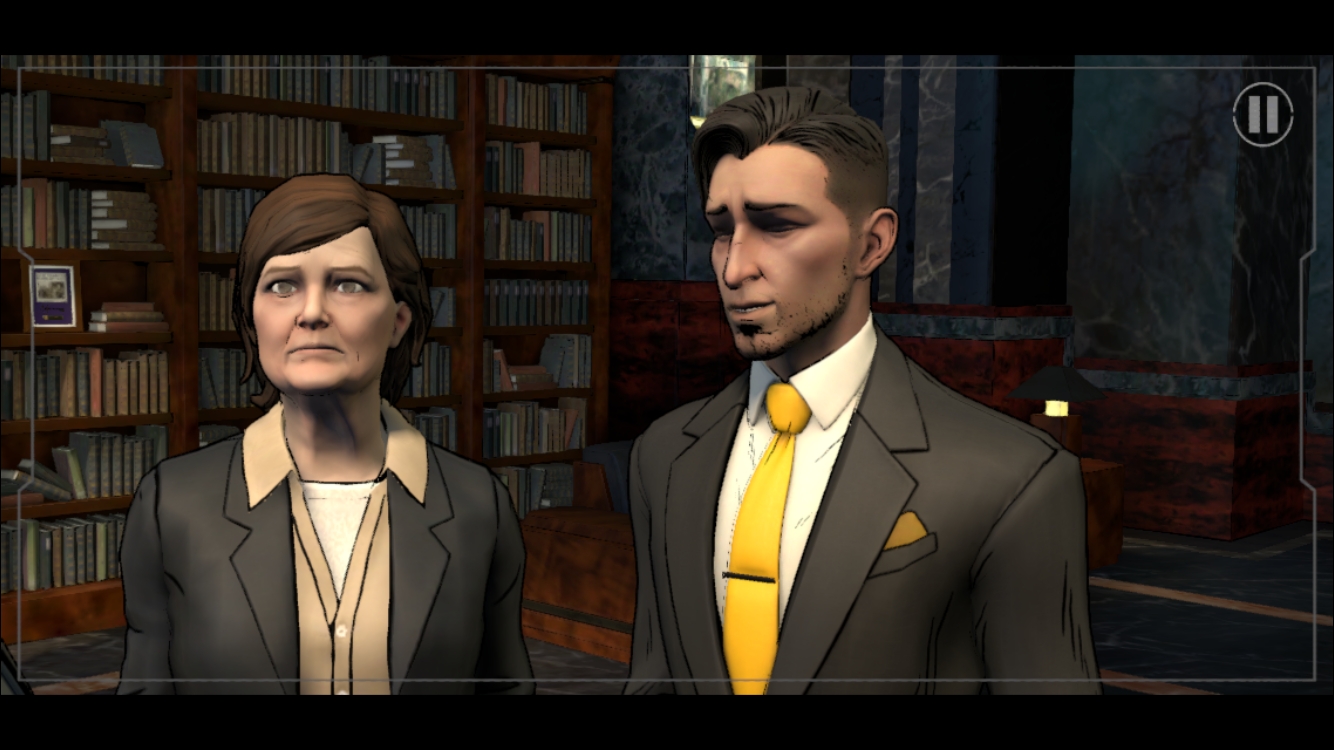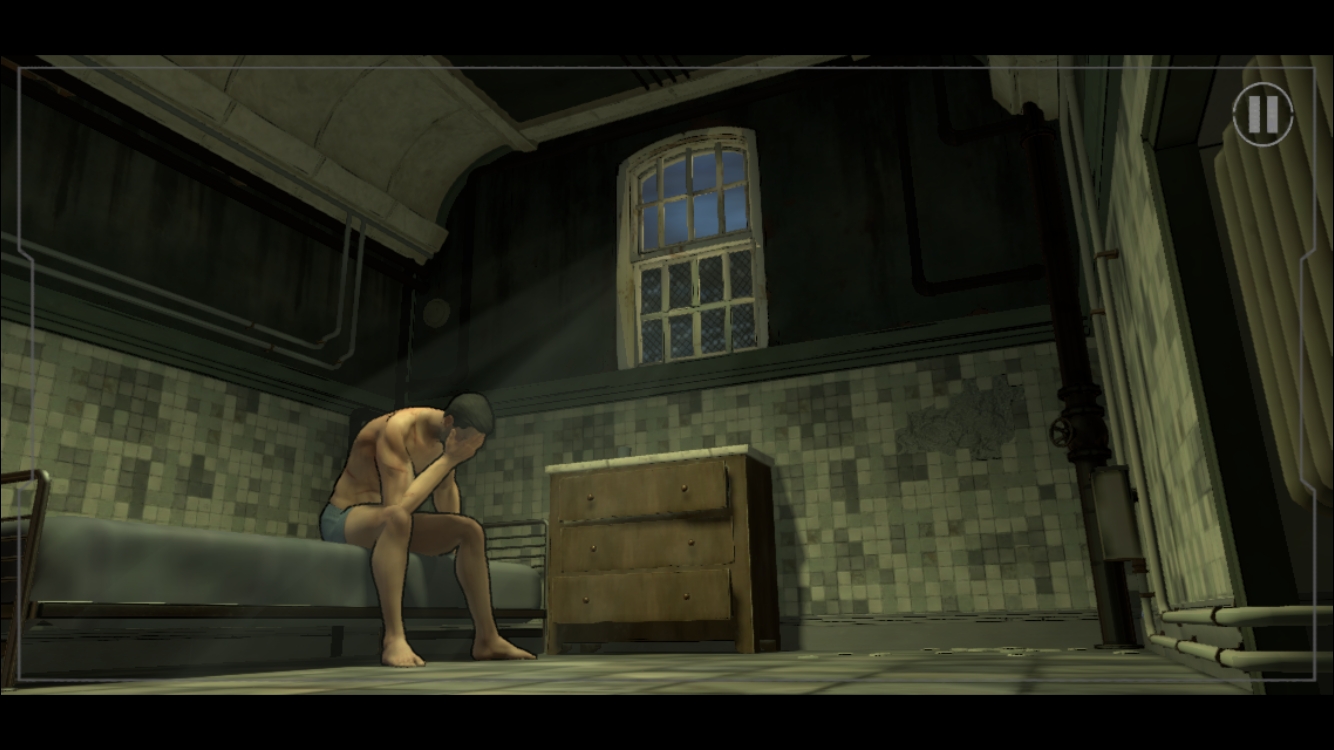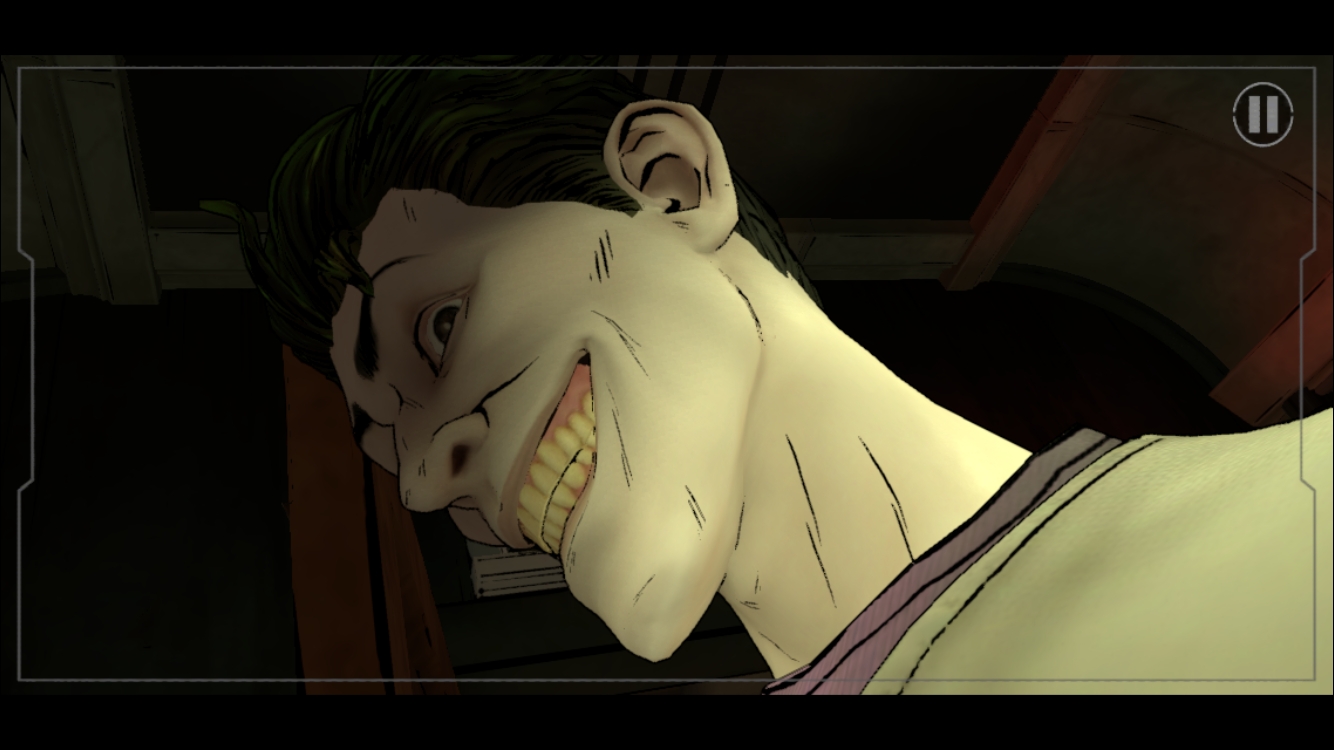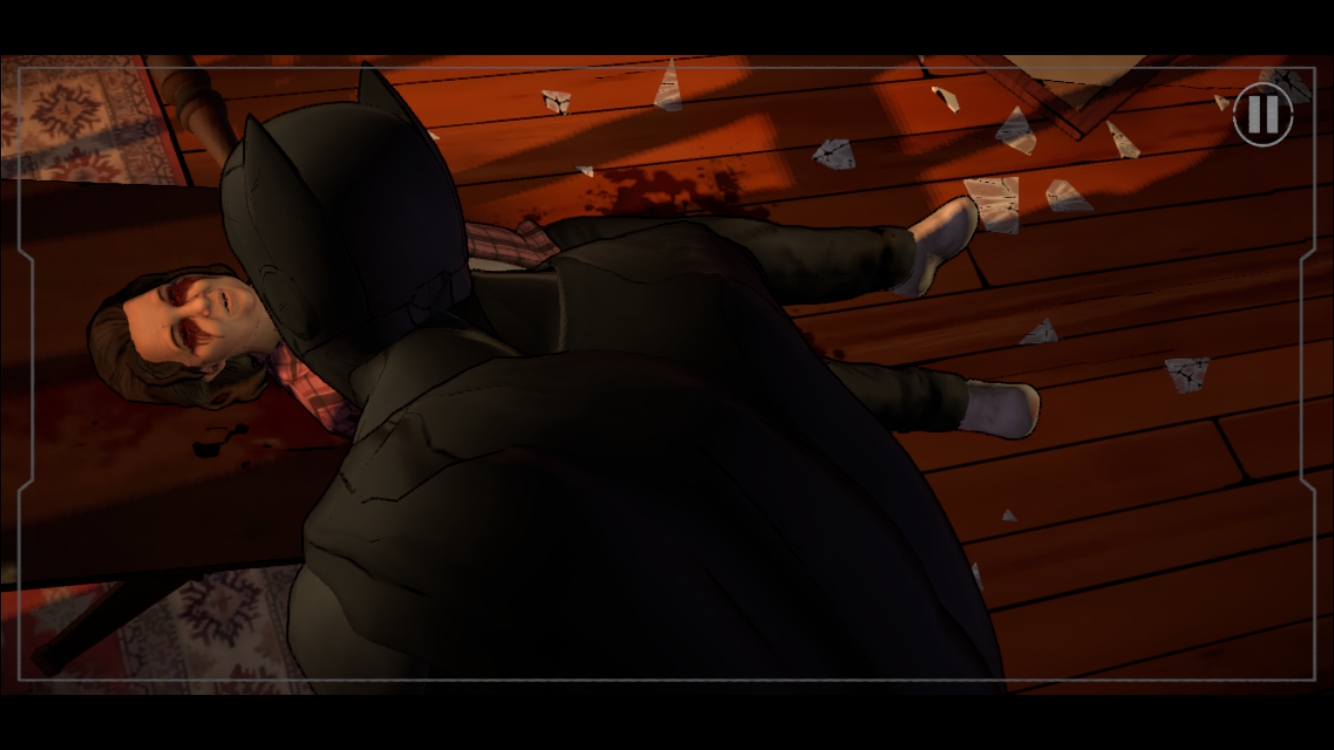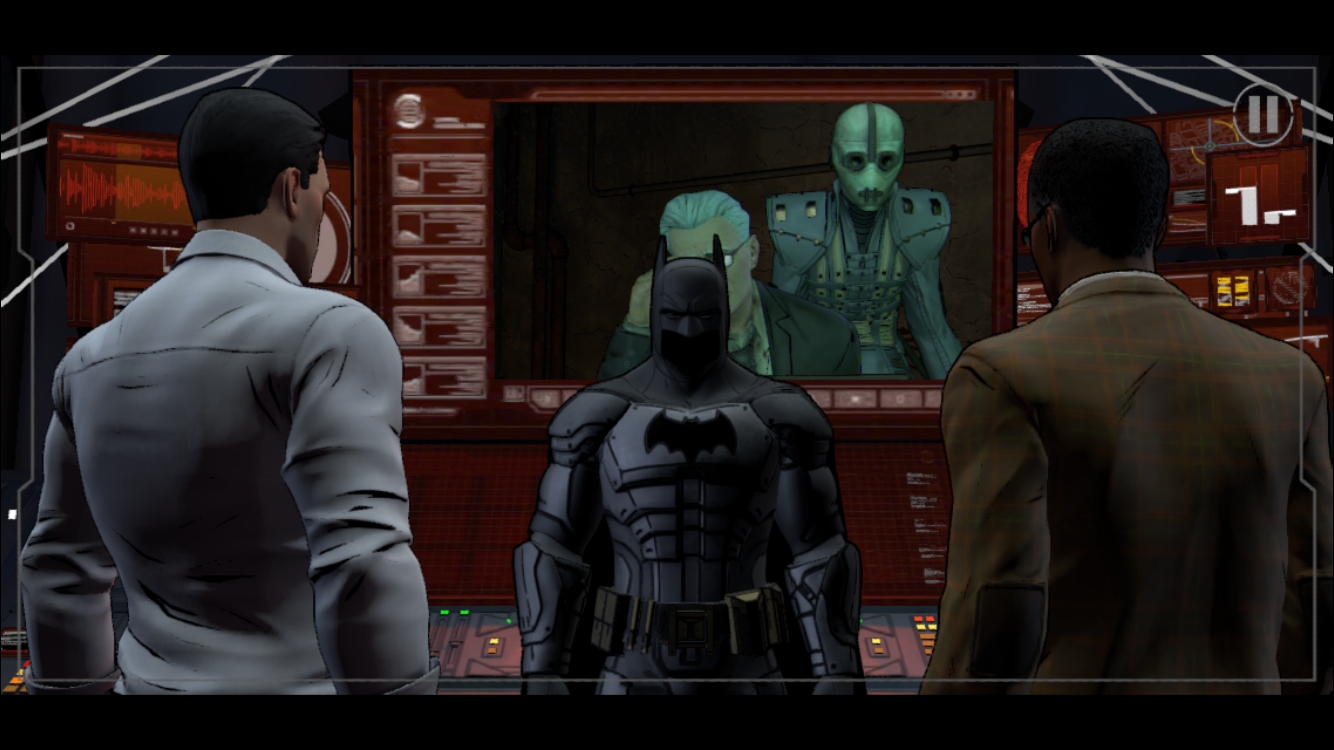 I often find myself into a bit of a bind when I review a game that’s well done in terms of design but also has major technical issues. How do you separate the plot and design ideas in the first episode of BATMAN – The Telltale Series (Free) from the engine’s obvious shortcomings that make the game almost unplayable on all but the latest iOS devices? I’ve been playing the game on my iPhone 7 and even though I got some relatively long load times here and there, overall the experience was relatively fine (minus some typos, blurry text in the Codex, and graphical glitches). However, when I tried playing it on my iPad Air, I couldn’t enjoy the game because the minutes-long load times really messed with the flow of the story (it’s like watching a movie with long commercial breaks).
I often find myself into a bit of a bind when I review a game that’s well done in terms of design but also has major technical issues. How do you separate the plot and design ideas in the first episode of BATMAN – The Telltale Series (Free) from the engine’s obvious shortcomings that make the game almost unplayable on all but the latest iOS devices? I’ve been playing the game on my iPhone 7 and even though I got some relatively long load times here and there, overall the experience was relatively fine (minus some typos, blurry text in the Codex, and graphical glitches). However, when I tried playing it on my iPad Air, I couldn’t enjoy the game because the minutes-long load times really messed with the flow of the story (it’s like watching a movie with long commercial breaks).
So, even though I played the game without any serious issues, I can’t ignore that the majority of iOS players will have a pretty bad time trying to play the game, and that’s a great shame because the episode itself is an interesting take on the Batman myth and also brings some new tweaks to the Telltale formula. While you should keep the technical issues in mind, from here onwards I’ll be talking about the game without mentioning the load times because otherwise, this review would be pretty repetitious. Now, on to the rest of the review. And, of course, spoilers ahead.
When I heard that Telltale was going to do a Batman game, I wasn’t sure what to expect; the Dark Knight’s story has taken quite a few turns here and there and has plenty of villains to choose from. What I was expecting was a focus on Batman’s nightly escapades accompanied by plenty of quick-time events. Yet what Telltale delivered in the first episode, Realm of Shadows, is an interesting take on the Batman mythos with a focus not on what Batman does when the night falls but, rather, what Bruce Wayne has to deal with as he tries to navigate the corruption of Gotham City, a corruption that seems to have spread its tentacles from the organized crime all the way to the Mayor and everyone else in between.
What I enjoyed is that we don’t get a mopey, brooding Bruce wallowing in the emptiness caused by his parents’ demise (sorry Batman vs Superman fans) but a relatively lively Bruce who appears to have a strong sense of what Batman’s role is; he’s the instrument Wayne is using to bring order back to Gotham. There’s a pretty good balance between the two sides of the character, and that makes playing as Bruce intriguing. While playing as Bruce, I didn’t find myself impatiently waiting until I can get that suit back on again; instead, I enjoyed digging more into this character and the people he interacts with. Telltale fleshes out Bruce pretty well, which is necessary otherwise most players would have wanted to be playing as Batman rather than a “normal" guy. By giving us an interesting, believable Bruce, Telltale managed to create a sense of separation between the two sides of the character in the early parts of the story that worked to the benefit of the story as a whole.
That sense of separation is essential because it makes what happens next much more impactful. While the two worlds are initially kept quite distinct, Catwoman’s existence and her knowledge that Bruce is Batman ruptures that tidy separation and becomes the first sign that Batman’s world is seeping into Bruce’s and vice versa. I felt that the handling of Catwoman’s character was overall pretty good and even though it’s a character we’ve seen a million times, she still works well here as a constant reminder to Bruce that the suit doesn’t erase the identity of the one wearing it.
While Catwoman’s presence is like the pebble that starts off a tiny crack on a window, the news Bruce gets by the end of the episode cause that crack to rapidly expand and shatter Bruce’s sense of self and, as a consequence Batman’s sense of mission and purpose. A quick step back first. At the start of the episode, Batman foils a robbery at the offices of the very corrupt mayor. Bruce is also in the process of helping Harvey Dent become the next mayor, even though Dent isn’t exactly squeaky clean since he’s not above asking infamous mobster Carmine Falcone for help. While you can have Bruce play friendly with the mobster (or not), Bruce is still a relatively good guy, incorruptible in his sewer of a city because he has built his life on the clear cut good/bad dichotomy engendered by what he witnessed when his parents when gunned down.
Which is why when Telltale delivers the twist of the episode by having Falcone show Batman that the Waynes were neck deep into Gotham’s corruption, Bruce’s moral compass crumbles and he finds himself wondering who Bruce really is and, as a consequence, who Batman is. I enjoyed the twist in the often-told origin story that Telltale went with because it opens up different narrative avenues for the rest of the series from what we usually see in Batman stories. With the press and the police pressuring from all sides, trying to find out whether the Wayne’s are to blame for Gotham’s mess, your choices as Bruce become much more consequential. Add to that the tension between Bruce and Alfred, who appears to know much more than he’s said already and has been probably lying to Bruce, and you can see how Telltale cleverly takes two of the most stable things in Bruce Wayne’s life – his parents and Alfred – and twists them around into sources of doubt and conflict. A clever move that really made the episode tick for me.
Narratively, the episode worked for me overall. I liked the twists, I enjoyed the flawed – or possibly flawed – characters, and I liked that Telltale seems to be giving players a bit more time to respond than in other series, which lets me ponder some of my responses a bit more. I do wish the writers were a bit more cautious with the wording of some of the responses because there were times when one of my choices read quite sarcastic, but when I would pick it, my character would say it in a straight face. I know it’s difficult to ensure that tone carries clearly in the responses, but I do think responses could have been more transparent in terms of tone.
Telltale also added a detective mechanic that I found appropriate for a Batman game and a nice change from the usual tasks of picking responses and doing quick time events. When I had to investigate a warehouse, I got to go around examining clues and then linking them in pairs to recreate the events. It’s a mechanic similar to the game The Trace ($3.99), and I found it entertaining and hope to see more of it. And Batman also has a fun mechanic when it comes to taking down enemies, one that feels like a turn-based version of the PC Batman games. I enjoyed picking different ways to take down the enemies at Falcone’s headquarters and, again, it was a nice break from the narrative-heavy gameplay of the rest of the game.
Overall, I enjoyed the first episode of BATMAN: The Telltale Series both for its narrative twists and its new mechanics. I did encounter some issues with a few of my choices getting delivered in a very different tone from what I thought they would be, but other than that I thought it was solid in narrative terms and with strong voice performances. Now, in terms of all the technical issues and graphical glitches (like Selina’s legs disappearing at some points), I can’t help but feel that Telltale needs a new, more optimized engine because it’s risking turning many players away from its mobile products. These issues aren’t new and have been plaguing many Telltale series, and I feel they’re getting worse.
Nevertheless, those who can play it will enjoy this interesting take on the Batman mythos and the difficult choices that come with being Bruce and Batman. You can play the character as a knight in shining armor or as a vigilante barely skirting the limits of the law. Either way, I think you’ll enjoy Episode 1, Realms of Shadows; if you can actually play it that is.
Rating: 3.5/5
Bruce Wayne just can’t catch a break, and Telltale is to blame. Episode 2, Children of Arkham, starts right where the first one left off, with Bruce still reeling from what he’s discovered about his family and Alfred admitting that yes, all that’s been whispered – or even shouted – against the Waynes are more than based on reality. And this is where I think the best part of the series comes in; what does Batman do, where does he stand while the facade of the good, honest Waynes is being torn piece by piece and what’s left in its place is the image of a corrupt Thomas Wayne, a kingpin ruling Gotham relentlessly? Batman has made it his life’s purpose to stand up to villainy, defend the city of Gotham, and avenge his parents’ needless death. Batman is nothing without a clear sense of right or wrong, and Bruce is nothing without Batman; it’s easy to comprehend, then, how Telltale’s decision to mire the good name of the Wayne’s has given this Batman tale an intriguing dynamic that I’ve been quite enjoying. Spoilers follow, of course, but I haven’t spoiled the last big decision of the episode.
What makes this episode even more interesting is that the “bad" guys have made it their mission to take down the Wayne name, since they – rightfully – see it as a sign of injustice and lawlessness. What that leaves us with is Batman and Bruce fighting against men who are doing the work Batman would normally be doing – cleaning up the city – although admittedly, they are a tad more violent in their ways. I have a hunch we’ll get to see Batman suffer through an even bigger identity crisis as the series wears on, and I’m looking forward to seeing how Telltale will handle it.
As for this episode, after the revelation that Thomas Wayne was a piece of work (I won’t talk about his bad deeds here, but let’s just say that whatever was implied about him in the first episode might as well be a compliment), the dominoes keep on falling one by one. Penguin and his gang are out to clean the city – sorry Batman, someone’s took your night job – and Catwoman is on the list since she failed to complete her job in the first episode. Bruce’s attempt to warn her leads to probably the most bad-ass fight sequence in the history of Telltale, and one where the QTEs worked great. A truly enjoyable moment in the episode. You also get to decide how you want to play it with Catwoman; do you want to be proud and dismissive of her – even though there’s an obvious attraction – or do you lean in for a kiss and hope for the best?
As Bruce continues to untangle the web that his dad and his accomplices have woven, you get for the first time the choice between going in for a meeting as Bruce or as Batman. This was a great idea and highlighted the differences between the two characters both in terms of how they act but also how people around them react to them. I chose to go in as Bruce because I wanted to see whether being all suave and smart could get me what I wanted to know without having to use intimidation. You could go either way, though, and just the fact that I and many others chose to go in as Bruce is a testament to what a great job Telltale has done fleshing out this character.
The episode culminates in a rather cliche hostage situation-clock ticking kind of scene that we’ve seen a billion times. Yet Telltale handles it relatively well by having Batman work with Catwoman for the first time (bar fight aside). The revelations about the Waynes and the Children of Arkham drop one after the other just as the henchman do at the hands of Batman and Catwoman. A word about the Children of Arkham group, though. I thought it was a brilliant idea to name a group trying to eradicate Gotham’s corruption after the Asylum; it created an excellent diversion that made everyone think this episode would be all about Batman fighting against the usual Arkham baddies.
The episode concludes in a momentous decision that I won’t spoil, but it’s surely one that will reverberate throughout the rest of the series. I will say though that the developers play it well at the end and leave Batman and Bruce with impossible decisions on all sides. By doing so, they made me feel like I have quite a lot to say regarding which direction my narrative will go, and I think everyone playing this series will enjoy these big forks on the road more than in most other Telltale games. This series is really showing Telltale recipe’s strengths in creating captivating narratives with often anguishing choices.
A word about the technical issues that have so plagued the series. Episode 2 was better than Episode 1 overall, but I still had to deal with huge load times early on and with blurry text. I saw an update pop up yesterday that should fix the text issue and maybe improve the performance, but that came after I played the episode. Overall, if you have one of the latest devices, you’ll be fine; if not, I’m truly not sure you could play this series and enjoy it, which is a dreadful shame. Here’s hoping the performance is improved dramatically and soon.
Rating: 4.5/5
Telltale’s take on the Dark Knight continues to entertain both for its predictable aspects but, especially so, for its unpredictable ones. The writers decided to give us a Batman tale that starts like many other Batman tales, including the appearance of Catwoman, but as the episodes unfold, the writers are taking us on a different path that stands out among most other Batman stories. And that’s why I’m really enjoying this series. Episode 3, New World Order, has shown me that the series is only going to get better as we go.
The ending of Episode 2 saw Bruce Wayne and the Wayne name rightfully under attack as the Children of Arkham reveal to the world Thomas Wayne’s despicable acts that led to him becoming wealthy and influential and, in turn, led to the birth of Wayne Enterprises. Knowing that the funds aiding Batman in his quest to clean Gotham were the product of awful crimes against both the people of Gotham and even family friends puts a taint on Batman’s identity that Bruce is having a hard time erasing. Although there will be spoilers in this review, I won’t reveal the huge twist at the end of the episode, even though it’s a big part of why I can’t wait to play episode 4.
A quick word about the ongoing technical issues the series has had. There was a patch released recently that has actually improved load times considerably as well as cleared up all the fuzzy text in the Codex. I’m playing on an iPhone 7, so I don’t know how the game runs on older phones and tablets, but for me it’s playing fine now. So if you were sitting this one out because of the technical issues, it might be worth giving it another shot if you have a good enough phone or tablet.
In my playthrough, Episode 3 starts with a brief glimpse at Harvey Dent’s transformation (or descent) into Two-Face, the famously-unstable villain. In a narrative where Bruce is fighting to come to terms with his own two-faced family and legacy, Dent acts as a personification of that inner struggle. Or to put it more simply, Bruce is now Harvey but without the scars. While visiting Dent at the hospital, Batman sees the Bat signal lighting up the sky for the first time, and we soon find out that it was Gordon’s idea because he needed all the help he could get. The use of the sign is pretty appropriate in this episode since you end up spending more time as Batman compared to the other two episodes.
New World Order constantly forces you to choose, and the first major choice you have to make is whether to save Dent from the Children of Arkham or help Officer Montoya get some of the poisonous gas out of circulation. Either way you go, you end up with pretty heavy consequences, and that’s part of what I like about Telltale’s take on Batman. The consequences for your choices are pretty severe and game-changing, and that’s something that’s more apparent to the player than in previous series. You know that if you don’t help Dent, something bad will happen, but you have to make a choice. It’s like the classic superhero dilemma where a villain forces a choice between saving A or B, and there’s no saving both.
Batman’s precarious position continues to get worse as Episode 3 unfolds since even his secret identity is under threat. With the Children of Arkham hacking Wayne tech, they’ve managed to use the same backdoor Batman has been using to keep track of all that’s going on in Gotham. Having the Children of Arkham use the same techniques that Batman is using and also having them both have the same goal of cleaning Gotham’s corruption (although in radically different ways, at least for now) makes the two awfully similar, which raises all kinds of questions about vigilantism. Telltale’s Batman and villains are only different in terms of degree, not kind, and that is a narrative complication that I’m enjoying quite a bit.
Speaking of villains who might or might not be villains, Catwoman has as always a highly-suspect role in all that’s happening, and depending on how you’ve treated her in previous episodes, there’s a chance for some romancing. However, the romance doesn’t last long since Harvey Dent catches Wayne with his pants down (literally), and this weird triangle (or is it a square) further pushes Dent off the edge. Although he isn’t that much of a factor in this episode, I have a hunch Dent will play a pivotal role in the next episodes.
In keeping with tearing down Bruce Wayne’s identity bit by bit, the writers take away Wayne Enterprises from the now-tainted Bruce and give it Oswald Cobblepot. It’s been an entertaining ride seeing Bruce Wayne fighting with his legacy and name, and I’m sure we haven’t seen the full effects of that struggle yet. You can choose whether to go down peacefully or put up a fight, but the end result is similar; Bruce Wayne no longer runs Wayne Enterprises. Although let’s face it, he wasn’t much of a CEO anyway. Losing Wayne Enterprises, though, is more than just a a matter of pride; that’s where all his gadgets come from, so this move further weakens Batman as well.
I won’t foil the big twist at the end, but let’s just say it continues the theme of Bruce realizing his view of the world and the people around him is way off. Where does that leave Batman and Bruce? Well, Episode 4 is titled Guardian of Gotham, and I suspect that title might need a question mark at the end. New World Order definitely delivered a strong narrative with more than enough twists to make your choices actually matter. I’m enjoying the series more and more, and I actually can’t wait to play through Episode 4. However, I’m starting to feel really bad for poor Wayne and that poor little bat.
Rating: 4.5/5
During the Batman series, Bruce and the Dark Knight have had to struggle against all kinds of enemies, but the most constant one has been lots of technical issues. I’m bringing this up because I saw an improvement in the technical issues episode after episode, but unfortunately Episode 4 was the worse of them all, even on an iPhone 7. While the load times are finally down to reasonable levels, this time around I had major choppiness issues during fights and quite a few instances when characters’ lips were moving but no sound would come out. I must’ve missed around six or seven sentences throughout the episode, which is a major problem when you’re playing a narrative-based game that’s all about responding to others. As for the action scene issues, I got my head busted many more times that I would’ve if I could see what was going on in time to react. So, it’s a bit ironic that in an episode that’s all about hacking and Batman facing tech issues, I was facing the biggest tech issues yet, and they of course affect the review score.
Okay, now that the tech issues are covered, let’s move on to talk more about Episode 4, Guardian of Gotham. If you remember the previous episode, Bruce went a tad haywire at the end because (spoilers) Vicky Vale – aka Lady Arkham – injected him with the poison that makes people do what they truly desire without considering the social consequences (quite similar to alcohol in that way). The result? Mr. Bruce Wayne starts Episode 4 in Arkham, stuck in there with many patients who are only there because Wayne senior arranged it so. In other words, neither Gotham nor Arkham is fond of Bruce.
Placing Bruce in Arkham was smart because in this space Bruce is no longer in control, a situation we hadn’t seen up to this point in the series. Yet I felt that the writers rushed Bruce out of Arkham too quickly and lost an opportunity to really play around with the new power dynamics. Yes, Bruce does meet the Joker – and he’s quite the character – but overall, Bruce’s Arkham residency was too brief. There are a couple of interesting choices to be made that I’m sure will have an effect in the final episode, but overall I wanted to see Bruce mentally tortured just a bit more.
Once Bruce is finally out of Arkham, he finds out that the city has changed a lot in his absence. The funny part of that is that it pretty much felt like Bruce was gone for a day at the most. Timeline issues aside, Gotham continues to turn on Bruce and we find ourselves in an interesting universe where Batman is much more liked than Bruce. I enjoyed this twist in the Batman mythos where Bruce and Batman change places in some aspects, kind of like Freaky Friday. Dent – or Two-Face by now – continues to convincingly spiral out of control and to hunt down Bruce, at least in my playthrough.
What I didn’t find that convincing was Lady Arkham’s violent turn. Part of what I enjoyed in the previous episodes was how the Children of Arkham were pretty much doing what Batman was doing but with more violent means. All they wanted was to clean up Arkham city from its corruption. But when Lady Arkham goes all berserk on her parents – at least as far as we know so far – she becomes just another crazy monster of the kind Batman always fights. By turning her into a crazed, eye-gouging menace, the series lost a complex villain and instead got a cliche one in its place.
The other big twist of the episode is how Penguin manages to take away Batman’s gadgets and use them on the dark knight himself. This was another clever idea on the writers’ behalf since we know that Batman is pretty much a man who’s better than normal humans because of superior training and high-tech gadgets. Again, though, I felt that the episode sped through the idea of a gadget-less Batman without stopping to give us a closer look of how a Batman without any gadgets would be and how different of a hero he would, or wouldn’t, be. I think part of the issue was the episode trying to do to much in too little time and ending up only skimming the surface of some very intriguing ponds.
Was the episode entertaining? Overall yes, but more because of the possibilities it created rather than the actual narrative it delivered. I wish I had spent more time in Arkham and more time running around without my gadgets. Instead, I felt like I was being pushed through the narrative too fast, barely stopping to smell the deteriorating daisies. Add to that the many and serious technical issues I faced, and it’s fair to say I wasn’t a big fan of Guardian of Gotham. It’s still an entertaining story, but it could have been so much better. Hopefully Episode 5 will end the series in a smoothly-operating bang.
Rating: 3/5
After four episodes filled with intriguing narrative twists and very frustrating technical issues, we have reached the end of the road with Episode 5: City of Light. As much as I would like to just focus on the narrative and gameplay aspects of City of Light, I can’t ignore the serious technical issues I faced during my playthrough, and this time around it wasn’t just long load times, although those are annoying and break the flow of the action. Imagine running after the main villain of the series in the hallways of Arkham Asylum and having to wait 5 seconds every time you turn a corner; it’s hard to be immersed in the narrative in a situation like that.
In addition to long and frequent load times, City of Light had serious visual bugs that hindered my actions more than a few times. The most grievous was the “black curtain" one where objects and characters in the near-background literally cannot be seen . This issue would have been fine if Batman’s fight was against a black blob gradually swallowing Gotham city, but this visual bug concealed enemies and other dangers I had to react to. As much as I enjoyed the narrative and the entertaining twists and turns, I can’t ignore the fact that Batman: The Telltale Series was by far the worst-performing Telltale series on mobile, and that was truly disappointing.
Let’s move on to the rest of the episode now. As was to be expected, City of Lights is all about Batman finally confronting Lady Arkham – (spoiler) aka Vicky Veil – as well as Harvey Dent, who by now has slid straight into his Two-Face alter ego. Since this is at its heart a comic book storyline, I wasn’t surprised to see Alfred taken hostage by Lady Arkham; after all, this is a very common trope of the genre. Alfred’s absence should have prompted Bruce’s identity to unravel even further, but as was the case in the previous episode, the writers were in a hurry to move to the conflict part of the episode, so we missed the chance to see how Bruce would have acted after losing the only remaining member of his “family."
Speaking of people in Bruce’s life, Catwoman makes a brief appearance in City of Light, but it was a fleeting appearance, which was a pity. Selina was a very strong character earlier in the series, and I was hoping to see more of her ambivalent relationship with Bruce and Batman. Instead, I got a pretty predictable scene, but I’m happy there was some kind of an encounter between the two. Now I wonder whether Telltale will do another Batman series (my guess is yes) and whether Bruce’s relationship with Selina will continue where this episode left off (my guess is again yes).
One narrative move I did like had to do with my complain about Lady Arkham’s descent into a kind of madness in the previous episode. Initially, I liked Lady Arkham because she was a slightly-more violent version of Batman but had the same motivations. And then she went all eye-gouging mad and tore her mother and father to shreds, which made her seem like just another two-dimensional comic book villain, all violence and little complexity. City of Light takes us back to a more complicated villain by giving us the motivation behind her rage; a literally tortured childhood that transformed Vicky Vale into Lady Arkham. Better enemies make for better heroes and better stories, so I was glad to see this narrative turn in Lady Arkham’s character.
Another enemy that threatened Bruce and Batman in City of Light was, of course, Harvey Dent, and that confrontation had an interesting twist that reinforced one of the strongest parts of this whole series; the importance of Bruce Wayne. Harvey forces Bruce rather than Batman to face him, and because of that I had to use my words rather than my gadgets to disarm the situation. Well, disarm might be a strong word since I lost a few hostages along the way, and that was a pleasant part of the whole scene (in relative terms, of course) because it raised the stakes. As has been the case with most major scenes in this series, the buildup was long and tense but the resolution a bit too swift for my taste; I wish the pacing was a bit more even.
The final encounter between Batman and Lady Arkham takes most of the episode, but it has enough twists and turns to make it interesting. Yet I still felt the wheels moving towards the inevitable defeat of Lady Arkham. I would have preferred the possibility that she might actually escape if I didn’t make the right moves rather than just feeling the encounter was all about how she will end up perishing instead of whether she would. Having that doubt would have been great given the option to reveal your secret identity to Lady Arkham along the way; imagine if you don’t know whether she’ll make it or not and then having to decide whether to remove that mask. Still, overall the encounter was fun, despite the game occasionally failing to recognize my swipes, which resulted in Batman failing a few more times than he would have otherwise.
The ending definitely leaves the door open for another Batman series by bringing in the Joker, and I would definitely be up for it, provided it actually plays well on mobile. The narrative as a whole was quite entertaining, especially the emphasis on Bruce Wayne and his challenges. The pacing was off in quite a few occasions, but at the same time it’s not easy to pack all these events in 5 relatively-short episodes. So, I do understand why some moments were a bit on the rushed side. As a whole, Batman: The Telltale Series was another feather in the cap of the developer, but I can’t ignore the huge issues mobile players faced because they greatly affected my enjoyment and left a sour taste.
Rating: 3/5
